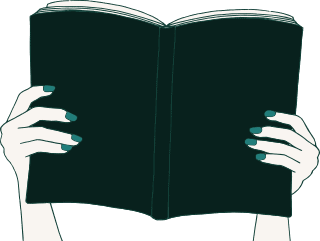Ahead of the premiere of Wonka in Belgian cinemas, Ewoud Ceulemans, TV and culture specialist at De Morgen, contacted Leander Duthoy to dig deeper into the motivations behind the famous character Willy Wonka. Duthoy talks about the childhood influences that writer Roald Dahl incorporated into his book, the ambiguity that makes the character so fascinating, and why the book lends itself to successful adaptations.
Duthoy, Leander. In: ‘Raar, droog en ondoorgrondelijk’, interview for De Morgen by Ewoud Ceulemans.
11 december 2023.
When Joke Van Leeuwen states that her books are for “starting and other humans”, she means that she writes her books with the belief that both children and adults can enjoy them. Rather than seeing children as “less developed” or “radically different”, the children’s book author believes in the kinship model (Gubar) – the idea that children and adults are fundamentally related or similar. Because “being a child” as well as “being an adult” play a key role in children’s literature and their adaptations, Frauke Pauwels explores in this article whether children’s books and their adaptations can be used as intergenerational communication tools to improve understanding between young and old. Drawing on insights from children’s literature studies, age studies and adaptation studies, two books by Joke Van Leeuwen and their film adaptations are examined: Iep! (Eep!, 1996) and Toen mijn vader een struik werd (When my father became a bush, 2010).
Frauke Pauwels examines whether and how these works succeed in interpreting or conveying the kinship model or invite audiences to question age norms. This analysis yields the insight that both the two books and their adaptations address and expose the taken-for-grantedness of certain ideas about age, and that children’s literature can certainly be a playing field on which diverse interpretations of age expectations can challenge and enrich each other. However, it appears that most adults still judge the film adaptations predominantly from their beliefs about what children are able to understand and like – based on their own adult interpretation of the concept of childness (Hollindale). In short, cultural and personal visions of what it means to be a child may (still) limit the intergenerational understanding that children’s and adolescent literature and their film adaptations could foster.
Pauwels, Frauke. ‘Ook geschikt voor volwassenen: Twee jeugdromans van Joke van Leeuwen en hun adaptaties als stapsteen naar intergenerationeel begrip’.
Cahier voor Literatuurwetenschap, vol. 14, 2023, pp. 157–168.
In recent decades, age studies has started to emerge as a new approach to study children’s literature. This book is co-authored by several members of the CAFYR team and builds on that scholarship but also significantly extends it by exploring age in various aspects of children’s literature: the age of the author, the characters, the writing style, the intended readership and the real reader. Moreover, the authors explore what different theories and methods can be used to study age in children’s literature, and what their affordances and limits are. The analyses combine age studies with life writing studies, cognitive narratology, digital humanities, comparative literary studies, reader-response research and media studies. To ensure coherence, the book offers an in-depth exploration of the oeuvre of a single author, David Almond. The aesthetic and thematic richness of Almond’s works has been widely recognised. This book adds to the understanding of his oeuvre by offering a multi-faceted analysis of age. In addition to discussing the film adaptation of his best-known novel Skellig, this book also offers analyses of works that have received less attention, such as Counting Stars, Clay and Bone Music. Readers will also get a fuller understanding of Almond as a crosswriter of literature for children, adolescents and adults.
Joosen, Vanessa, Michelle Anya Anjirbag, Leander Duthoy, Lindsey Geybels, Frauke Pauwels & Emma-Louise Silva. ‘Age in David Almond’s Oeuvre: A Multi-Method to Studying Age and the Life Course in Children’s Literature’.
Routledge, 2023.
doi: 10.4324/9781003369608
